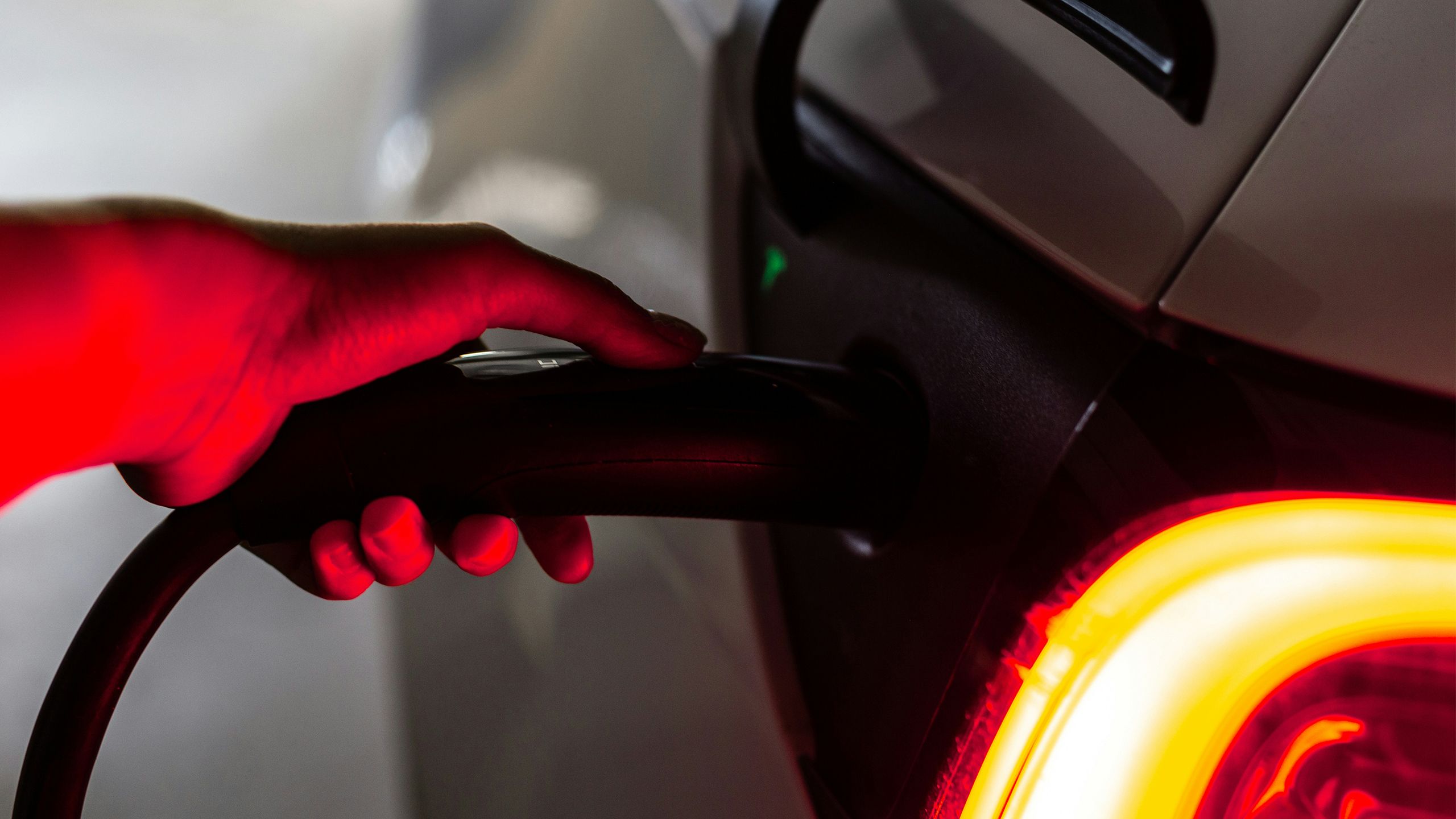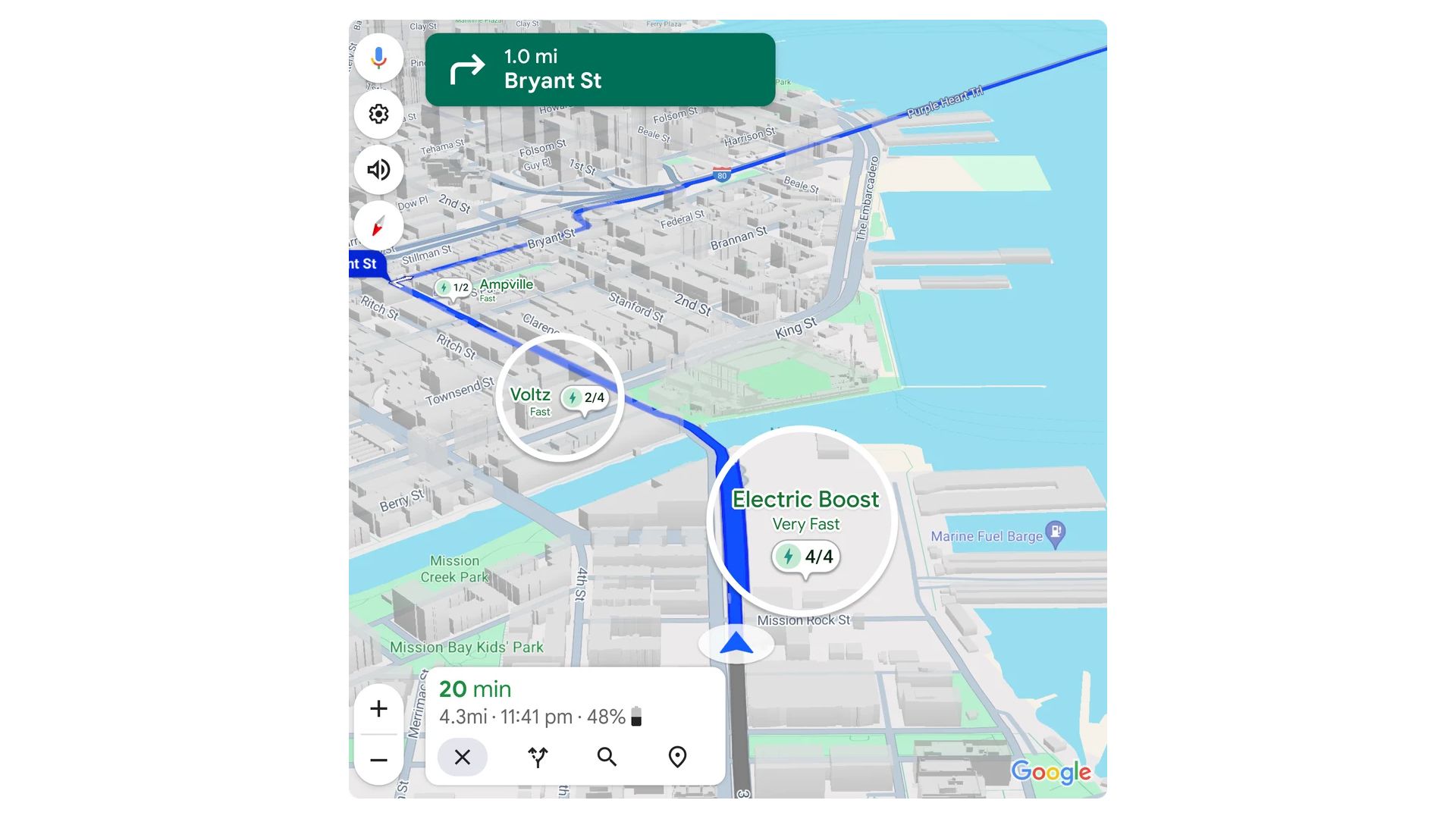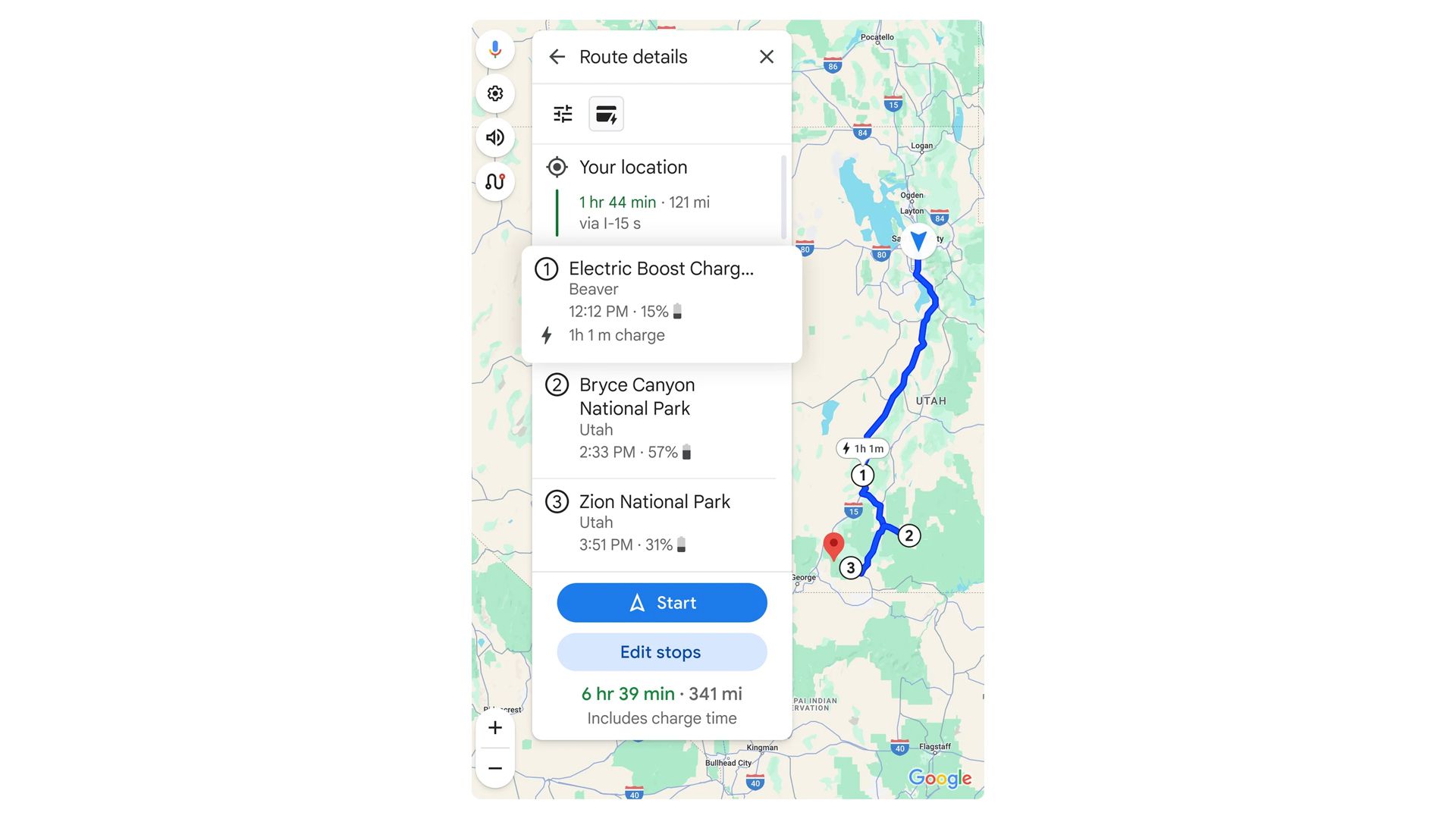Key Takeaways
- Google Maps will provide EV drivers detailed info about charging stations, sourced from user reviews.
- Users can now add wait times and connector types in reviews to help others quickly find compatible stations.
- Maps will show nearby chargers on in-car navigation, with charging speed details, limited to Google-made vehicles.
Google Maps is slated to get yet more enhancements to support EVs “in the coming months,” Google revealed on Wednesday. Many of these are focused on providing more details about EV charging stations, including AI-generated descriptions about where to find a charger at a particular building. These descriptions will roll out gradually, sourcing their content from user reviews. Google gives the example of finding a charger within a multilevel parking garage in New York City, for which the AI description might say “Enter the underground parking lot and follow the signs toward the exit. Just before exiting, turn right.”
Google is also prompting users to add more details to their reviews, such as wait times and the sort of connector they used. The latter is extremely important, since a station that supports vehicles with CCS, for instance, might not be able to handle ones equipped with CHAdeMO. To make the review process quicker, Google is using a narrow assortment of one-tap responses for the new info. People will still be able to add photos, star ratings, and text comments, as with any business listed in Maps.
When using Maps for real-time navigation, drivers will soon be able to see nearby chargers on the in-car map, including details like charging speed and whether or not ports are available. Initially however this feature will be limited to vehicles with Google software built in, and the company hasn’t said when it might come to Android Auto and/or the standalone Maps app. Speed also appears to be rated in a basic fashion, with map labels such as “fast” or “very fast” instead of details like connector type.
A feature that will be permanently exclusive to Google-based vehicles is enhanced trip planning. On multi-stop trips, Maps will recommend EV stations along the way based on your car’s current battery level. Drivers will also see projected battery levels for each selected stop, and a re-calculated ETA based on how long it should take to charge, not just usual factors like traffic congestion and speed limits.
Where will these upgrades be available?
All of the above changes are set to roll out globally. Google will presumably focus on the US to start with — aside from having its headquarters there, the country has some of the most extensive EV infrastructure in the world, particularly in states like California and New York. From there it’s likely to prefer other markets with a decent EV footprint, such as Japan and the UK.

How Tesla’s NACS plug became the de facto EV charging standard
And why that’s a good thing for the auto industry.
In a related change, Google Travel now has an EV filter for hotels, which lets people narrow their booking options to those with on-site charging. That has the potential of upending the industry, at least in theory, since hotels may be encouraged to add plugs to attract business — or at least avoid losing it. The auto industry is slowly transitioning towards an EV-only future, and charging during an overnight stay is a lot more convenient than having to juice up at a separate station in an unfamiliar city.













